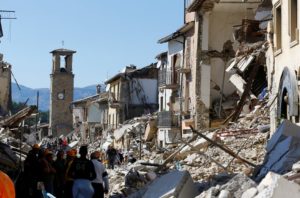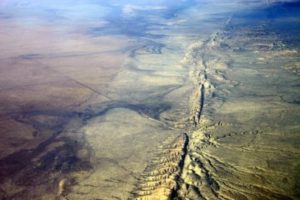Terremoto
 I was sitting in a building in the San Jose, Costa Rica airport waiting for my luggage when the building shook. A soccer game was on the TV, and the guys just looked up and grinned at one another. It wasn’t much of an earthquake, but Costa Rica has had some big ones. It’s a mountainous country, and in 1991 a big one closed the road and railroad from San Jose to the Caribbean coast for weeks.
I was sitting in a building in the San Jose, Costa Rica airport waiting for my luggage when the building shook. A soccer game was on the TV, and the guys just looked up and grinned at one another. It wasn’t much of an earthquake, but Costa Rica has had some big ones. It’s a mountainous country, and in 1991 a big one closed the road and railroad from San Jose to the Caribbean coast for weeks.
Typically, earthquakes happen where tectonic plates collide. In Costa Rica it is the Cocos Plate diving (subducting) under the Caribbean Plate. The Cocos is headed east, the Caribbean is moving west. The combined motion makes for some real fireworks. The boundary is marked by a string of Volcanos. The only active volcano I have visited is Irazu, northeast of San Jose. It is a big tourist attraction and showered ash on President Kennedy in March of 1963. I developed more of an appreciation of a volcano’s power when I looked into the crater.
Volcanos and earthquakes release energy on a scale that overwhelms the human imagination. The nation of Japan moved about eight feet east feet during the 2011 earthquake which caused the tsunami responsible for inundating the east coast of the island. Sea level rose about ten feet. Now that, folks, is one hell of a shove.
Economic loss was in the neighborhood of $235 billion, the costliest natural disaster ever. The magnitude was 9.1, about as big as they get. Remember the scale is logarithmic, with the amplitude increasing by a factor of ten when moving from number to another. Thus a magnitude increase from four to to nine is 500 times more intense. The energy release is not on the order of ten times, but closer to thirty times. You do the math. It is enough energy to change the rotational speed and tilt of the earth.
 The southern end of our old friend the San Andreas fault is overdue for a major slip. The northern portion is less likely as several good sized quakes have released much of the stored energy. Estimates of the magnitude of a big one on the southern segment are in the range of 8.0. Not as bad as the Japan shake, but enough to more than $200 billion, with major loss of life. That Los Angeles Basin is full of people and stuff. A big quake would trap most of the people there with no power or water. Can you imagine no superhero movies for many months?
The southern end of our old friend the San Andreas fault is overdue for a major slip. The northern portion is less likely as several good sized quakes have released much of the stored energy. Estimates of the magnitude of a big one on the southern segment are in the range of 8.0. Not as bad as the Japan shake, but enough to more than $200 billion, with major loss of life. That Los Angeles Basin is full of people and stuff. A big quake would trap most of the people there with no power or water. Can you imagine no superhero movies for many months?
Christmas brought me several good books, including one on earthquakes and one on wildfire. Brace yourself for disaster stories. What is clear to me from my studies on wildfire and earthquakes is that there is risk to living on this planet. Humanity only serves to magnify the rise. We want our surroundings to be fairly steady state. Not so, the driving force is change. Whether natural phenomena or human caused. It will all change and then we die. The key is to make life worthwhile, accepting the inevitability of change. In the meantime, try to avoid Southern California if you can.